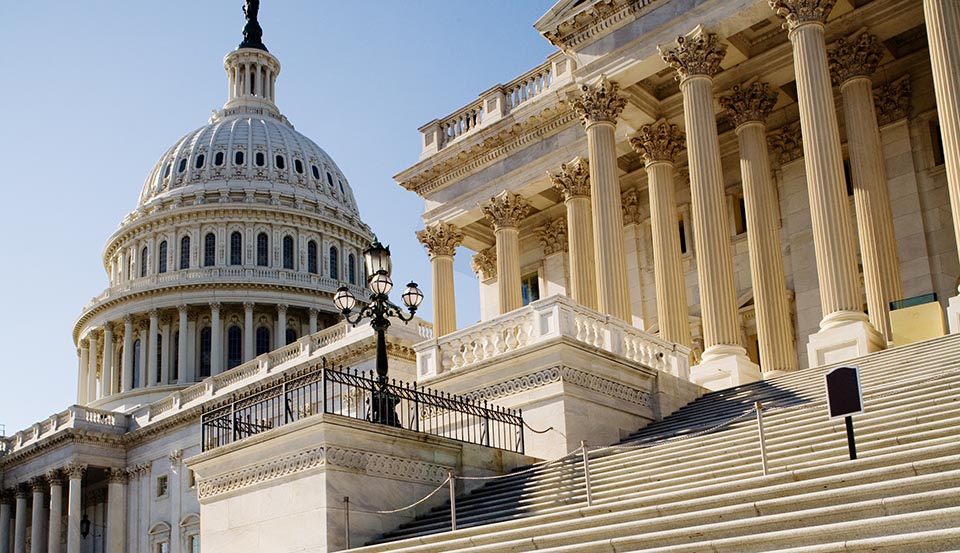The Quiet Battle over Obama-Era Regulations
If you think you missed some knock down, drag out battle over the nation’s Fair Housing and Fair Lending protections over the last year, you would be wrong. There certainly has been some knocking down of regulations since last summer, but, in contrast to the splashy headlines around the failed Obamacare repeal effort and the successful Tax Cut and Jobs Act, the Trump Administration has gone about this in a quiet manner.
The Administration has engaged in a cabinet-level effort to significantly change the way in which the federal government manages fair housing and lending practices. Depending on your particular flavor of politics this can be seen either as much-needed reform, or, as a wholesale dismantling of the protections previously extended to disadvantaged citizens. Irrespective of the cable news network you watch, it’s inarguable that the Administration’s agenda is broad and likely to fundamentally alter the housing and lending situation for millions of Americans, and yet it has received relatively scant attention from the media.
It’s critical for private lenders, as well as participants in the construction and development industries, to stay abreast of these developments so they can understand their impact on lending for housing starts, public/private partnerships, block grant funding, CFPB regulation, and a host of other developments.
It Began Last Summer…
The federal government’s management and enforcement of three landmark pieces of legislation are currently being fundamentally reinterpreted by purposeful bureaucratic tinkering by cabinet members, rather than the more public process of congressional legislative action. The three pieces of legislation being tinkered with are:
- The 1967 Fair Housing Act
- The 1977 Community Reinvestment Act
- The 2010 Dodd Frank Act, and specifically the CFPB’s Office
Before we look at what is going on with these pieces of legislation today, it’s worth a little history lesson on each of these to better understand what reform could mean in today’s economy.
History of the Fair Housing Act
The Fair Housing Act was passed in part as a response to the urban rioting that swept the U.S. in 1967. President Lyndon Johnson established a commission to investigate the social unrest. The Commission identified racial segregation as the cause, coining the phrase “two societies, one white, one black.” While skeptical at first, in the aftermath of Dr. Martin Luther King assassination in 1968, Congress passed the bill. Johnson signed the legislation into law soon after.
Over the decades, the Fair Housing Act was expanded in terms of its protections. It now covers race, color, religion, sex, national origin, disability, and families with children. In 1988, Congress beefed up the law’s enforcement mechanisms and increased penalties for violators.
The Housing and Urban Development Agency (“HUD”) is vested with the primary oversight and implementation of the Fair Housing Act. The agency oversees more than 1.2 million public housing units, helps subsidize mortgages, and is responsible for enforcement actions against violators of the Act’s protections in the housing market.
In 1995, HUD began requiring jurisdictions to complete a formal plan for de-segregation that was to include identifying obstacles to fair housing and remediation efforts to overcome them. The rule allowed HUD to deny block grant funds for any jurisdiction that failed to comply, but in practice these rules were loosely enforced and became mostly a bureaucratic exercise. Since 1995 there are only two examples of HUD withholding funds due to Fair Housing Act violations.
Is it Combating Segregation, or “Social Engineering”?
Taking a more activist stance, during the Obama Administration, HUD issued sweeping new rules that served as both carrot and stick to address perceived gaps in the enforcement of the Fair Housing Act. The new regulations increased the pace and scope of enforcement over racial disparities in communities. These new rules raised the ire of conservatives who decried the rules as “social engineering,” Chief amongst these critics was the conservative neurosurgeon Dr. Ben Carson, the current HUD Secretary.
The 2015 rule was a “stick” that provided local governments with new data analytics tools to identify community-wide segregated living patterns and directed them to take forceful legal steps to promote integration. Called the “Affirmatively Furthering Fair Housing” (AFFH) rule, it required any community receiving federal housing assistance to study their residential housing patterns, identify instances of continued segregation and discrimination, and present a remediation plan to HUD. “These actions won’t make every community perfect,” President Obama said, “But they will help make our communities stronger and more vibrant.”
In 2016, HUD issued another regulation as the “carrot” to build on its de-segregation enforcement. Called the “Small Area Fair Market Rent Rule” (SAFMR) , this rule increased the purchasing power of Section 8 rental vouchers for low-income families so they could more easily move out of poor neighborhoods.
Consistent with his position as a presidential candidate, as HUD Secretary, Ben Carson has criticized the Obama-era rules as “mandated social engineering” and “failed socialism” while promising his agency would “reinterpret” them.

Residential Street in Strawberry Mansion are of Philadelphia
Last year HUD announced that it was suspending the carrot, the rule to help low income families relocate to less poor neighborhoods, prompting the NAACP Legal Defense Fund and other civil rights groups to file a lawsuit in response. The court ruled against HUD’s suspension of this program in January on the grounds that it violated the Administrative Procedures Act. HUD now claims that it is implementing the SAFMR rule.
Soon after losing the case on Section 8 vouchers, HUD took aim at its stick — the AFFH rule. In 2017 HUD administrators had reviewed 49 AFFH submissions from over 1,200 jurisdictions receiving block grants. About one-third of them had been returned to the local communities to be revised, and two-thirds were accepted. Meanwhile the vast majority of jurisdictions have not sent in any compliance reports.
With these statistics in mind, this time HUD did not attempt to repeal the AFFH rule, which was likely to spawn another robust legal challenge. Instead it quietly published a notice in the Federal Register that it was delaying the deadline for AFFH submissions until 2020, effectively taking the stick out of HUD’s enforcement.
The third tack taken by the Trump Administration is more likely to have a deeper impact on HUD’s activities than any soft-pedaling of the Obama-era desegregation rules. Under budget director Mick Mulvaney, the Office of Management and Budget (“OMB”) proposed to cut $6 billion from HUD’s fiscal year 2018 budget of $40 billion. “I wasn’t happy,” Dr. Carson was quoted after the budget directive became public. “I’ve made many trips back and forth to OMB to talk about it. … There’s still some differences of opinion there.”
While Congress presently grapples with plans to pass a two-year federal budget, should the Administration’s stated priority to reduce HUD funding make it into final legislation, the impact would be felt across all HUD programs including Section 8 vouchers and its block grants to support new affordable housing starts.
History of the Community Reinvestment Act
The Community Reinvestment Act (CRA) was passed in 1977 to encourage banks to increase lending to people living in low- and moderate-income neighborhoods. It was a result of the “neighborhood movement” of the 1970s and 1980s, when community groups protested racially discriminatory housing and banking practices that impacted poor urban neighborhoods. The Fair Housing Act and other fair lending laws on the books by then addressed discriminatory practices that had historically harmed minorities and women. In contrast, the CRA was designed to stop banks from rejecting loans from low- and moderate-income communities as a whole.
The CRA specifically took aim at a discriminatory practice called redlining that had been entrenched in federal housing policy. Redlining caused loans to borrowers in low-income neighborhoods to either be denied outright, or to be encumbered with higher interest rates than for other borrowers of comparable income levels who lived in more affluent or suburban neighborhoods.
The Treasury Department is responsible for implementing and enforcing the CRA. Every few years a lender is assessed by its specific regulator for its compliance to the CFA based on a four-tier score:
(1) outstanding,
(2) satisfactory,
(3) needs improvement, and
(4) substantial noncompliance.
Banks in the third and fourth buckets face remediation and are blocked from M&A activity until they improve their score.
CRA Under the Trump Administration
The CRA has been criticized in some quarters, particularly by some financial institutions, as having devolved into a bureaucratic compliance exercise that’s out of step with today’s lending practices. Last summer, the Treasury Department issued a regulatory reform report that fired a warning shot about the ruling, stating that regulators needed to “better align the benefits arising from banks” CRA investments with the interest and needs of the communities that they serve.” The brief assessment in the report also stated that the “supervisory and regulatory framework” for CRA obligations needed to be improved.
During testimony to Congress last year, Treasury Secretary Steve Mnuchin said that the Administration’s goal was to ensure CRA funding “is absolutely going to help communities and isn’t just a check-the-box to satisfy regulators or shareholders.” The biggest area of criticism is that CRA assesses banks only based on areas where a physical branch exists. In the era of mobile banking, that practice provides an unfair advantage to some banks and fintech lenders because they can underwrite only higher-quality loans in areas where they have no physical presence and skate over CRA requirements. Meanwhile, other lenders, like community banks, have to grapple with the tougher loans in order to stay compliant with CRA.
Another criticism of the CRA is the perception that it has been diluted to more of a consumer compliance “hammer” rather than a law overseeing lending standards. Critics point to the OCC’s recent CRA enforcement actions against Wells Fargo in connection with its consumer deposit accounts fraud. Nobody argued that Wells should face no repercussions for its massive consumer scandal. Rather, the criticism was that enforcement under the CRA as opposed to under other laws served to water down the original intent of the CRA.
Furthermore, critics argued that penalizing Wells under CRA actually harmed the goals of CRA because it disincentives Wells Fargo from being a leader in lending to lower income areas – which it had been for years.
For private lenders and borrowers in the construction and development sectors, the Administration’s approach to CRA will be important to watch. On the one hand, under Secretary Mnuchin the Trump Administration may take genuine steps for common sense reform. Leveling the playing field for CRA may make community banks and smaller lenders better able to compete and offer lower rates on projects in poorer neighborhoods than they currently can support due to their compliance burdens.
On the other hand, a wholesale rollback of CRA protections under the guise of reform could create greater demand for financing — and challenges for developers to get it — in low- and middle-income urban communities. There’s not likely to be much movement in either direction until after the midterm elections later this year, but, during the second half of the Trump Administration’s first term very significant changes are likely to happen.
History of the Office of Fair Lending and Equal Opportunity (OFLEO)
The landmark 2010 Dodd Frank Act emerged as a bipartisan response to address the global banking failures of 2008 and the Great Recession. About a year after the legislation passed, the Consumer Finance Protection Bureau (“CFPB”) was created. Shortly after that, Congress created the Office of Fair Lending and Equal Opportunity (OFLEO) as a division of the CFPB to focus exclusively on policing discriminatory lending patterns. OFLEO works with bank examiners and coordinates with the CFPB’s enforcement team, state regulators, and Department of Justice attorneys when violations are found.
Under its first administrator Richard Cordray the CFPB investigated hundreds of thousands of complaints from consumers and extracted more than $12 billion in fines and consumer refunds from lending institutions. The OFLEO division led the charge on ferreting out alleged racial bias within all this regulatory activity, and took action on several high profile cases:
- GE Capital was investigated for excluding over 130,000 borrowers from debt relief because of their ethnicity — settling for $200 million and a commitment to end the exclusionary practices.
- National City Mortgage was charged with extracting higher mortgage interest rates from black and Latino borrowers, and OFLEO settled with its successor owner, PNC Bank, to implement remedies.
- Hudson City Savings Bank was accused of “redlining” to deny African American communities fair access to credit, a violation of CRA rules. Hudson (later acquired by M&T Bank) paid a $35 million fine and promised $25 million in loan subsidies to communities it disenfranchised.
- American Honda Finance, Toyota Motor Credit, Ally Bank and Fifth/Third Bank were accused of discrimination with their auto lending business and levied over $140 million in penalties.
- The Home Mortgage Disclosure Act’s Regulation C was revised with OFLEO’s direction so that, beginning in 2018, lenders must collect a more comprehensive set of mortgage loan data to allow regulators to better pinpoint and address potential discrimination in the mortgage market.
OFLEO Under the Trump Administration
While to progressives, the above list of enforcement actions appeared to be a victory against racism and economic injustice, conservatives generally considered it an unfair, heavy-handed attack by unelected regulators on the free market. The Trump Administration came into power promising to either eliminate or strip the oversight powers of the CFPB. When outgoing administrator Richard Cordray left, it was no surprise that President Trump handpicked his OMB chief Mick Mulvaney to take on a second role and helm the CFPB on an interim basis. (It may have been a surprise, however, to Cordray’s successor who insisted she was lawfully appointed as the interim chair. That dispute is still before the courts).
Mulvaney is a former House Representative who decried the CFPB while in Congress for what he labeled its abusive overreach of its legislative mandate. Mulvaney’s voting record generally sided with the financial institutions he’s now charged with overseeing. Recently he stripped OFLEO of its enforcement powers, under the rationale that he is moving those activities to another part of the CFPB.
It was a nimble bit of bureaucratic maneuvering by which Mulvaney recently announced he would transfer OFLEO’s enforcement activities from the CFPB division called Supervision, Enforcement, and Fair Lending (“SEFL”) — where it currently resides — to the Office of Equal Opportunity and Fairness (“OEOF”) that’s part of the Director’s Office and under his direct supervision. He instructed OFLEO staff to refocus their energies on advocacy, coordination and education. The official line is that this simply is an effort to reduce redundancies and make the bureau more efficient.
Critics cried foul, however, accusing Mulvaney of putting enforcement activities for discriminatory lending under his direct control in order to ease up on lenders. The OEOF is a personnel office, overseeing “equal employment opportunity and diversity and inclusion” for the agency’s employees. Mulvaney’s critics point out that it performs no enforcement at all. In fact, it has a limited budget and small staff, akin to the Human Resources department of a corporation. OFLEO, by contrast, was mandated by Dodd-Frank to conduct “oversight and enforcement of federal laws intended to ensure the fair, equitable, and nondiscriminatory access to credit,” such as the Equal Credit Opportunity Act or the Home Mortgage Disclosure Act. By splitting the agency, opponents say, Mulvaney is taking the teeth out of what Congress had defined as a top priority.
Mulvaney is also criticized for a pocket veto approach to another element of regulation that the CFPB had used against auto lenders for alleged predatory practices. In December, the Government Accountability Office said that the auto lending discrimination guidance could no longer be used by its examiners until it went to Congress for review (and potential nullification by the Republican-controlled body). Since Mulvaney took up the helm at CFPB, and brought in a chief of staff who previously worked for Ford Motor Company and lobbied against the guidance, the Bureau simply failed to send Congress the plan, which had the effect of dissolving it. Under Mulvaney’s leadership the pace of “de-fanging” the CFPB will only accelerate.
What’s In Store This Year?
While there’s much talk in Washington about a big infrastructure bill, and as of this writing the Senate is working on a bipartisan budget deal for the next two years, it’s fair to predict that Congress is not likely to get a lot of new legislation to the President’s desk during this midterm election year. Although there is likely to be a dearth of legislative action, participants in the private lending industry, as well as in the construction and housing sectors, should keep a close eye on what the Executive Branch is doing with fair housing and fair lending regulations.
If HUD loses out at the budget table, there would be a big negative impact on both funding for private-public partnership projects and valuations for rental properties, given the loss of funding to block grants and Section 8 housing support. If HUD basically stops fairness enforcement — and it’s reportedly pretty quiet in Dr. Carson’s office these days — it may take years for the laissez faire regulatory stance to impact the sector.
The Treasury’s oversight of the CRA should also be watched. Good reform may help small institutions, including community banks, compete better against other lenders – including hard money lenders – for projects in low income communities.
The drama in the CFPB is probably the most important to watch. It’s fair to say that global lenders love the hands-off approach that Mick Mulvaney brings to his department. Whether you think the Administration is in the process of abandoning its responsibility to protect consumers from predatory lenders — or setting good lenders free from the shackles of overly zealous and unelected regulators — it’s clearly going to have a positive impact on the biggest financial institutions. The under-the-radar manner in which enforcement activities are now being relinquished suggests that big lenders have a path to relax their lending standards and practices, and become even more competitive in all kinds of markets. Either side of the aisle should recognize that the next few years of regulatory activity will have a profound and lasting effect on the American economy as a whole.















Leave A Comment